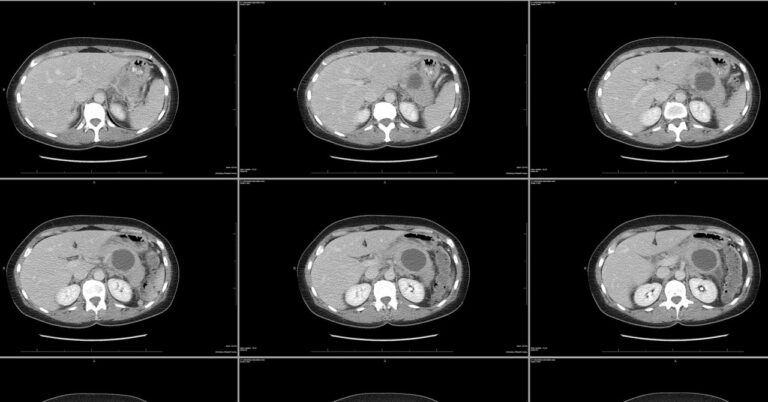
[ad_1]
The weight loss was surprising, says Rajagopalan. Ozempic and Wegovy are injected into the fatty tissue of the thighs, waist, or upper arm. From there, it enters the bloodstream, where it somehow communicates with the brain. Since Fractyl’s gene therapy is delivered directly to the pancreas, company scientists didn’t expect to see significant weight loss.
One explanation is that the gene therapy is producing enough GLP-1 in the pancreas that some is entering the circulatory system and talking to the brain, says Daniel Drucker, an endocrinologist and professor of medicine at the University of Toronto. Another possibility, he says, is that there is an unknown signaling mechanism in the pancreas that tells the brain to stop eating.
To deliver the therapy to the pancreas, the company developed an endoscopic procedure that involves threading a thin needle attached to a catheter that travels down the throat and into the GI tract. Fractyl scientists tested the procedure for safety in 50 pigs, which have a pancreas that’s anatomically similar to that of humans. The team confirmed that the procedure successfully delivered the gene therapy to pancreatic cells but did not test whether it led to blood sugar or weight changes in the pigs. No adverse side effects were observed in the animals.
But Drucker is skeptical about injecting a therapy directly into the human pancreas. “The pancreas is a very fragile and important organ,” he says. “If it’s poked or prodded, it can induce inflammation.”
In addition to producing insulin, the pancreas makes digestive enzymes that help break down food. But when it becomes inflamed—a condition called pancreatitis—these enzymes can attack the pancreas instead. Pancreatitis can be short-lived or chronic, the latter causing permanent damage to the organ.
Gene therapy could prove an expensive approach to treating diabetes. Several gene therapies are already on the market for other conditions, and they come with sky-high prices. One of them, which treats a blood disorder called beta-thalassemia, costs $2.8 million. Another, for hemophilia B, costs $3.5 million.
Maria Escobar Vasco, an endocrinologist and diabetes expert at UT Health San Antonio, says the idea of a one-time gene therapy is intriguing, but more testing will be needed. “The question is, how safe is it? I don’t think we know yet,” she says. The company is aiming to begin an initial human trial by the end of 2024, so those answers are still a few years away.
In the meantime, there is already an alternative way of delivering semaglutide: by pill. Novo Nordisk, which manufactures Ozempic and Wegovy, also makes Rybelsus, a tablet used in diabetes treatment, and is now testing a higher-dose version for weight control. Competitor Pfizer is developing its own pill that also mimics GLP-1. Pills can help people stick to a dosing regimen because they are more convenient than injections—but they still carry a risk of gastrointestinal side effects and also have to be taken repeatedly.
Whether Fractyl’s gene therapy will cause similar side effects is still unknown. With Ozempic and Wegovy, these effects often occur in the early stages of taking the drug, when the dose is steadily increased. Usually, these go away on their own.
“The effect for the drug to cause nausea actually happens in the brain,” says Randy Seeley, a professor of surgery and obesity specialist at the University of Michigan who is an adviser to Fractyl. Since Fractyl’s gene therapy is delivered to the pancreas, this may avoid the problem of side effects. But if some GLP-1 makes it into the bloodstream, Seeley says there could be side effects similar to those with current drugs.
If a one-shot gene therapy does work—and is safe—it could be a game changer for managing diabetes and weight, however. “Type 2 diabetes is a chronic condition that needs to be treated chronically. Obesity is a chronic condition that needs to be treated chronically,” says Seeley. “If you only have to give people access once, rather than every week, the use of this strategy will go up and benefit more patients.”
[ad_2]